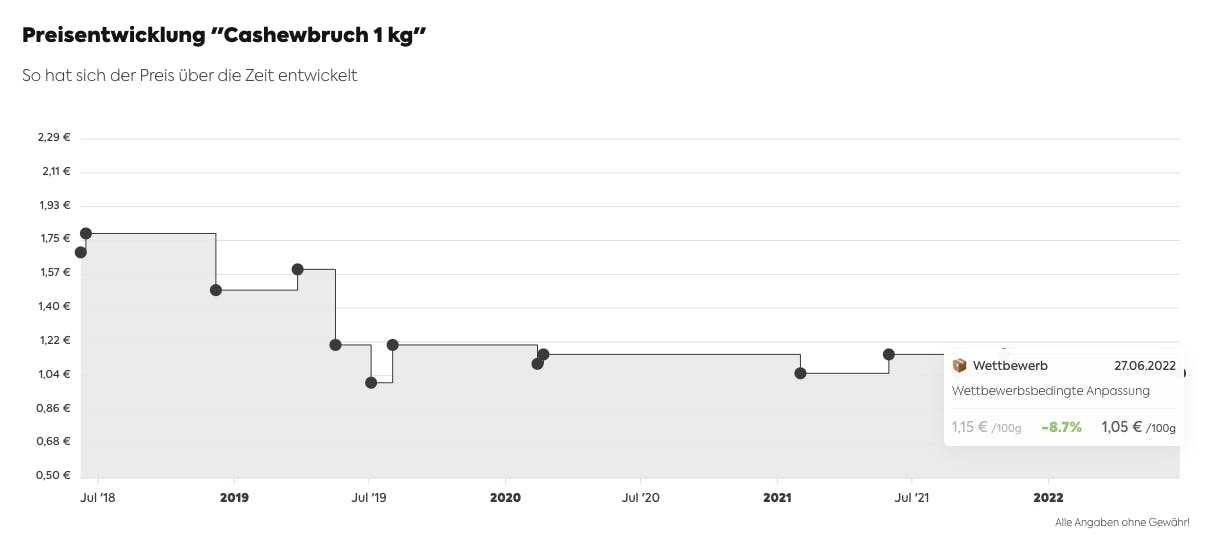How does pricing work at KoRo?
We have already explained in detail how we set prices at KoRo in the past. Take a look at our blog for the details. The underlying clever formulas were devised by two mathematicians at KoRo. As a non-mathematician, I'll briefly summarize what the most important factors for our prices are:
- The basis for the sales price is our purchase price or our production costs. If our procurement costs increase, the selling price will logically also rise.
- In addition, we always look at the cheapest comparable competitors and compare ourselves with them to ensure that we can offer the best price-performance ratio for every product.
- In addition to the procurement costs, there are of course other costs associated with the sale of products, such as logistics costs (no, unfortunately shipping costs do not cover these), costs for shipping service providers, rent and salaries. We therefore define minimum margins that we have to achieve with the products in order to continue operating KoRo.
These factors are then used to determine the prices of our products. In order to offer you the best price while remaining fair and marketable, we constantly adjust our prices. Open price communication and absolute transparency are our principles. That is why you will find our price graph on every item page under "Statistics", which shows the price development of a product. If you move the cursor over the circles in the graph, you will see an explanation for the price increase or decrease. This allows you to understand at any time why a price has changed and what it depends on. Reasons for price increases can be, for example, poor harvests in countries of origin, which automatically reduces the product supply and we pay the producers a higher raw material price. As a customer, you can therefore rely on KoRo to compare prices for you and offer you a fair price-performance ratio.

For all those who would like to go into more detail about KoRo's pricing: click here.